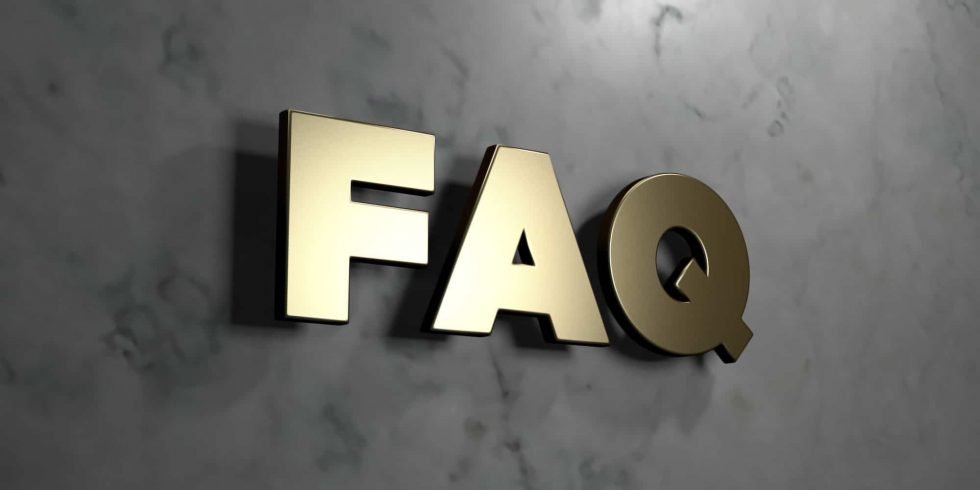Introduction
Our Business Lead Team has put together some of the most FAQs that we feel are vital to understanding the processes and procedures that translation and localization go through. This article is designed for businesses that are looking to outsource their projects to translation and localization service providers (also referred to as language service providers, or simply LSP), and individual translators and localizers who would like to best understand which steps they should perform for their clients.
Since the language industry is vast, we were only able to put together 10 Q & A in this article based on what our clients usually ask. Should you have further questions or need to discuss with our team of language professionals, feel free to do so from this blog or by visiting our website. We hope you enjoy reading!
Question:
Can I get a free quote?
Answer:
Absolutely! Each Language Service Provider’s policies are different, but we do encourage our clients to request a quote (or consultation). Our existing clients know our pricing; even so, we always give them a choice to approve our quote and agree on the budget, timelines, and feasibility before their project kicks off.
In our commitment to transparency with our clients, quote requests are even more encouraged for our first-time clients to make sure that they understand what their projects entail. This quoting step also serves to explain to our clients what they can expect as we also answer any questions they might have at no cost. It does not matter whether a potential client decides to withdraw their request or put it off at a later time for different reasons. We believe that the best value comes with transparency, and that is how we cultivate our relationships with our clients. We always welcome and highly value every inquiry!
Question:
What process do you follow while performing translation and localization?
Answer:
We follow 8 fundamental steps to successfully carry our translations (and localizations) up to the final version in ascending order:
- Translation Quote: Before we initiate any work, we give our clients a quote and agree on the budget. Some companies and individuals do not pursue quotes, especially if they are existing clients or have minimal projects. Once they approve the quote, they send over their documents to be translated.
- Document Preparation: After receiving the documents from the client, we prepare them into translatable content. Some documents may be in formats such as PDF, PNG, and JPG, which usually need to be converted to software-compatible versions. Other files such as Excel and Word may need some adjustments such as layout so that they reflect a perfect final version.
- Initial Translation: This is the very first step of translation. The translator performs the conversion of content into the target language until the entire document is translated. We encourage our translators to review their work before they pass it on to the next step, however, this does not replace other review steps.
- Translation Review: Once the initial translation step is complete, the reviewer goes over the content to make sure that it is accurately translated. One reason why a “team” is essential in translation, there are several steps that a project goes through before you can confirm whether it meets the basic quality standards.
- Revision: Revision is a bit more thorough than the review. ISO 17100 – the leading international quality standards – defines revision as a “bilingual examination of target language content against source language content for its suitability for the agreed purpose”. Sometimes “revision” and “bilingual editing” are used interchangeably.
- Proofreading: This is the pre-final stage of the translation process. After performing preliminary steps, the translation could still contain some errors. The proofreader’s role is to read between the lines throughout the document and fix typographical, grammatical, spelling, and stylistic errors that might have been overlooked by the previous steps. While revision compares the translation against the source language, proofreading simply cares about the flow of the translation and any flaws thereof.
- Quality Assurance (QA): Translation Quality Assurance is the last and most important step in the translation and localization process. This stage is intended to address all discrepancies that are flagged by translation software (if you are using a CAT tool). There are two types of QA according to MemoQ: 1) Automatic QA, which is computer-based, and 2) Linguistic QA, which is a customized approach for enhanced results.
- Delivery to Client: Once the project has gone through all the above steps, it is now time to deliver the final version to the client. Some clients do not order all of the above due to different reasons. However, the role of a Language Service Provider is to deliver the best product possible regardless.

Question:
What is the difference between translation and localization?
Answer:
While translation and localization are sometimes used interchangeably by language service providers, they are two completely different steps. Translation focuses on rendering content from a certain language into another (e.g., from English to Chinese). On the contrary, localization is used to refer to the translation of specific data such as websites, software, video games, or mobile or computer applications.
Localization creates your content in a new language, taking into account the cultural and geographical aspects. This process fundamentally adapts all aspects of the target language, depending on the field so that the translation sounds authentically natural to the target audience. For example, if you want to localize your medical application, you have to translate by adapting the content to align with the local public, culture, geographical codes, and search engine optimization (SEO) so that it is accessible both to the internet users and search engines.
Contrasting translation and localization, Lokalise said:
At its core, translation transforms text, while localization transforms the entire product or content from one language to another. The limits of localization are endless, and it extends far beyond translation.
Translation is indeed part of localization, but so much more is required for content to become authentic and locally accepted.
Question:
Do I have to submit the documents to your office location?
Answer:
The short answer is “no”, but it depends on your intended purpose. Some translations can be performed and exchanged over email without having to submit originals or pick them up at a certain location. However, if your translation is intended for immigration, for example, you would need to submit the originals in this case.
The process that we always follow is to translate the documents and submit them to a public notary for approval. The notary compares the translation against the original and adds a seal confirming the authenticity of the originals and their copies. The same process is required for certified translations, where an agency or individual translator adds their seal to confirm that they have translated and are delivering an exact copy of the original. If you are ordering your translation from a distance, you might have to mail the originals to us and receive your translations by mail.
Question:
Do I need to send my original documents?
Answer:
Based on Point 4 above, you will have to mail your original documents if you need them for school, immigration, or any other official use. Otherwise, you can send your electronic files over the internet and receive them in the same way once they are ready.
Question:
Do you translate content for a specific country?
Answer:
Yes, we do. One of the most popular ways to translate content for a specific country is localization (see Q. 3). Our linguists are based in many different countries to ensure the best results possible because we believe that native users of a certain language understand it better than anybody else. Some of our language professionals work remotely to ensure robust service delivery, but if your project demands on-site linguists, we will allocate them for you.
Question:
How can I trust the accuracy of your translations?
Answer:
Our language services are regulated by the International Organization for Standardization (ISO). This means that we have to abide by the quality standards elaborated in our license. This license outlines different agreements and best practices between the Language Service Provider and their Clients. Trying to measure the quality of translations in the absence of ISO standards would be the same as trying to count basketball points without a scoreboard. It would eventually become so much that some essentials are overlooked.
At the end of the day, it all depends on the client’s needs. If your translation is intended for casual use such as reading to understand a general meaning, you might not require absolutely high-quality translation. However, if you are in business and want to inform the general public about your products and services, you should stick to the quality because your success depends on your business language.
Question:
How much will my project cost?
Answer:
There is no straightforward answer to this question. I like to say that it all depends. For example, if you take into account the 8 steps of translation elaborated above, you will understand what I mean. Each translation or localization project involves many tools and resources.
We have outlined basic pricing and added it to our website to give our clients an idea of how much their project may cost. However, this pricing is only for reference since each project has its specific requirements. We perform all the above steps for our clients, and they are covered in our pricing. Remember, we will always give you a quote for you to approve before we get started.

Question:
How long does it take to complete the translation?
Answer:
Minimal projects can take up to 24 hours to complete, while complex ones take longer. If you need a simple translation because you have your own reviewers and quality checkers, for example, it will take us at least one day even though some languages may take longer. However, some projects take even months.
For example, most of our projects are in the medical field under linguistic validation and include cognitive debriefing. These projects go through translation testing steps on top of the above-mentioned processes. Therefore, we plan ahead with our clients and give the project in question enough time and anticipate some unforeseen force majeures. The project planning stage is a complete feasibility study that takes into account funds and resource availability, TAT, and quality.
Question:
Can I trust machine translation?
Answer:
Many people use machine translation for convenience. The most widely used engine is Google Translate. However, in the translation industry, machine translation (MT) means something slightly different. The machine translation process is performed through a designated software, using linguistic algorithms. The content is thereafter edited by a language professional to ensure accuracy.
Renowned Computer-Assisted Translation (CAT) tools such as MemoQ and Memsource allow the use of machine translation. The translator needs to decide whether they would like to use the feature and activate it through the software settings before they launch the initial translation step. Even though some languages are not supported under this approach, translators and translation agencies do not just opt for this option – there has to be a certain reason, which usually is reducing the process timescales. For example, translation automation can magically translate thousands of words in seconds.
Since MT can produce unwieldy results, it is essentially helpful to know how to use it in order to avoid disparaging your translation project and its intended purpose. In order to trust machine translation, you must ensure that the content is thoroughly edited by a translation professional. This editing technique is called Machine Translation Post-Editing (MTPE), or simply Post-Editing.
Bonus Point:
Machine Translation Post-Editing (MTPE) Techniques
Memsource outlined the two most popular editing steps in machine translation:
Light post-editing (LPE): This method cares about the general flow of the text and probably grammatical discrepancies such as typos, punctuation, etc. Most clients opt for LPE based on their budget. Consequently, the post-editor only does so much, leaving room for some inaccuracies. If you trust the language or posteditor’s job, the translation should be safe to use. We always emphasize the intended use of the final translation, and we ask all our clients to make sure that we are on the same page with regard to the quality demands.
Full post-editing (FPE): FPE is thorough editing that aims at addressing all discrepancies in machine-translated content. The post-editor looks at the grammatical, stylistic, idiomatic, cultural as well as syntactic aspects of the translation. A good FPE output reads as naturally as the target language. Even though its timescale is longer, it is the most recommended if you want to come up with the best quality. Lastly, this process does not replace final quality assurance (QA) measures already in place.
Message to My Readers:
I hope you found my article helpful. I would love your feedback below. My goal is to add value to my readers and, particularly, to clients by making their businesses more profitable and hassle-free. If you would like to learn more about how our language services can support your specific business model, I would be pleased to connect and discuss your questions further.
Over the years, Sim acquired vast experience while working with some of the world’s leading brands. He is passionate about sharing his extensive expertise and business acumen to help scaling businesses to build their niche, expand their markets, and internationalize their brands.
- How to Approach Financial Expectations with Your New Language Service Clients - March 20, 2024
- The Impact of AI on the Linguistic Career - November 10, 2023
- Every Language Translation Process Hinges on these 7 Linguistic Meanings - October 14, 2023



I visited several web sites however the audio feature for audio
content present at this web page is really marvelous.
Awesome post and right to the point. I am not sure
if this is actually the best place to ask but do you folks have any
thoughts on where to get some professional writers?
Thanks in advance 🙂